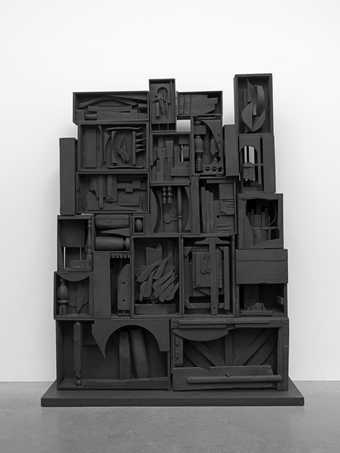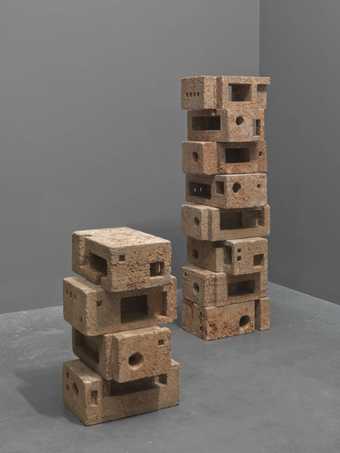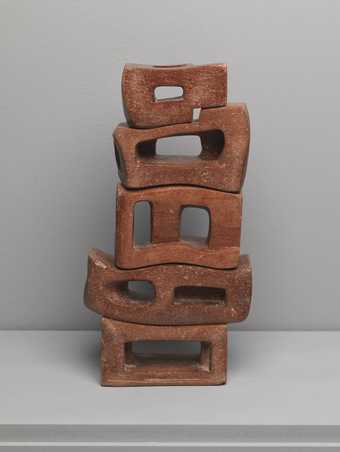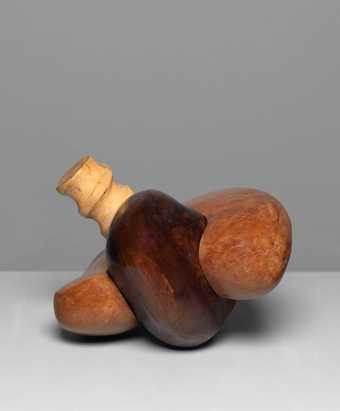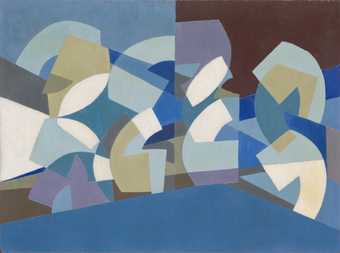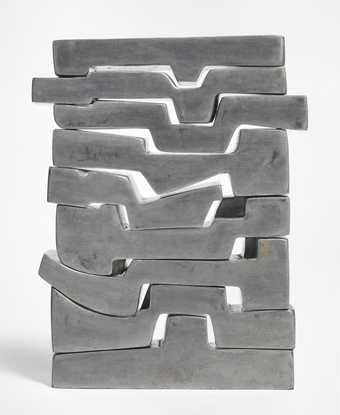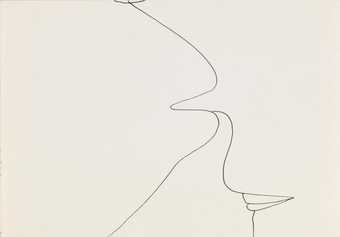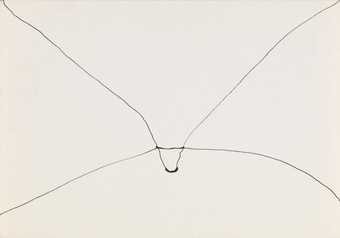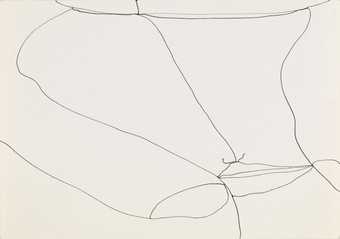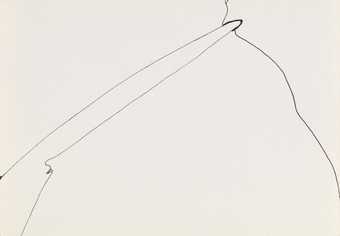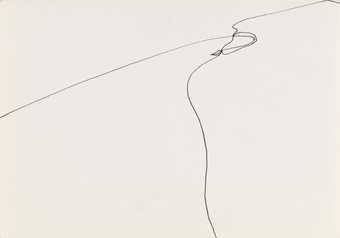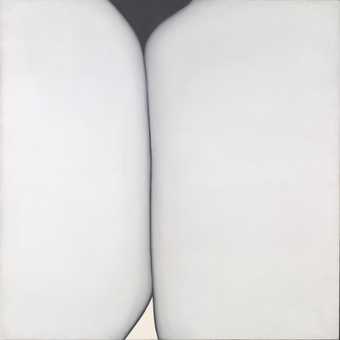In Tate Modern
- Artist
- Saloua Raouda Choucair 1916–2017
- Medium
- Wood
- Dimensions
- Object: 800 × 1645 × 300 mm
- Collection
- Tate
- Acquisition
- Presented anonymously 2011
- Reference
- T13279
Summary
Poem Wall is made in white painted wood and is one of a number of sculptural works that Choucair made from the early 1960s onwards which use the motif of interlocking forms. Prior to this she had made paintings with a similarly abstract aesthetic (see for example, Composition in Blue Module 1947–57, Tate T13308). Choucair made Poem Wall in Beirut, her home town, and its forms suggest an explicit reference to city architecture, amplified by the work’s title. The painted wooden forms sit on top of, and interlock with each other to create a monochrome structure suggestive of a cityscape with a taller building acting as a ‘bookend’ at either end. The forms mutually support each other and are held in a delicate balance.
Choucair’s use of interlocking forms grew out of her interest in her religion Sufism, and its related poetry, in which individual parts are recognized as having their own identity while contributing to the unity of the whole. Choucair used the term ‘sculptural poem’ for many of her works, such as this one, making explicit reference to the structure of Arabic poetry. The work’s title underlines this association. She has stated: ‘The way I organized my sculptural poems, for example, was inspired by Arabic poetry. I wanted rhythm like the poetic meter, to be at once more independent and interlinked, and to have lines like meanings, but plastic meanings.’ (Quoted in Mulhaq al-Nahar, 23 September 1995, p.10.)
Further reading
Joseph Tarrab, Hala Schoukair, Helen Kahl, Saloua Raouda Choucair: Her Life and Work, Beirut 2002.
Jessica Morgan
August 2010
Does this text contain inaccurate information or language that you feel we should improve or change? We would like to hear from you.
Display caption
From the early 1960s Choucair created sculptures consisting of interlocking pieces. She was inspired by qasida, a modular form of Arabic poetry. Individual stanzas have their own identity, while still contributing to the unity of the whole poem. Choucair thought of her works as ‘sculptural poems’. She explained: ‘I wanted rhythm like the poetic meter, to be at once more independent and interlinked, and to have lines like meanings, but plastic meanings.’ Informed by theories of quantum physics and Islamic theology, her works invite the viewer to imagine alternative compositions. These are suggested by the visible points of intersection between separate sculptural forms.
Gallery label, November 2021
Does this text contain inaccurate information or language that you feel we should improve or change? We would like to hear from you.
Explore
- abstraction(8,615)
-
- from recognisable sources(3,634)
-
- man-made(999)
- non-representational(6,161)
-
- geometric(3,072)
- monochromatic(722)
- formal qualities(12,454)
-
- rhythm(101)
- Lebanon(145)
- religions(181)
- lifestyle and culture(10,247)
-
- poetry(85)
You might like
-
Louise Nevelson Black Wall
1959 -
Saloua Raouda Choucair Infinite Structure
1963–5 -
Saloua Raouda Choucair Poem
1963–5 -
Saloua Raouda Choucair The Screw
1975–7 -
Saloua Raouda Choucair Composition in Blue Module
1947–51 -
Saloua Raouda Choucair Poem of Nine Verses
1966–8 -
Saloua Raouda Choucair Composition with Two Ovals
1951 -
Huguette Caland Flirt I
1972 -
Huguette Caland Flirt V
1972 -
Huguette Caland Flirt VI
1972 -
Huguette Caland Flirt VII
1972 -
Huguette Caland Flirt VIII
1972 -
Huguette Caland Flirt IX
1972 -
Huguette Caland Body Parts
1973 -
Huguette Caland Face to Face
1971


